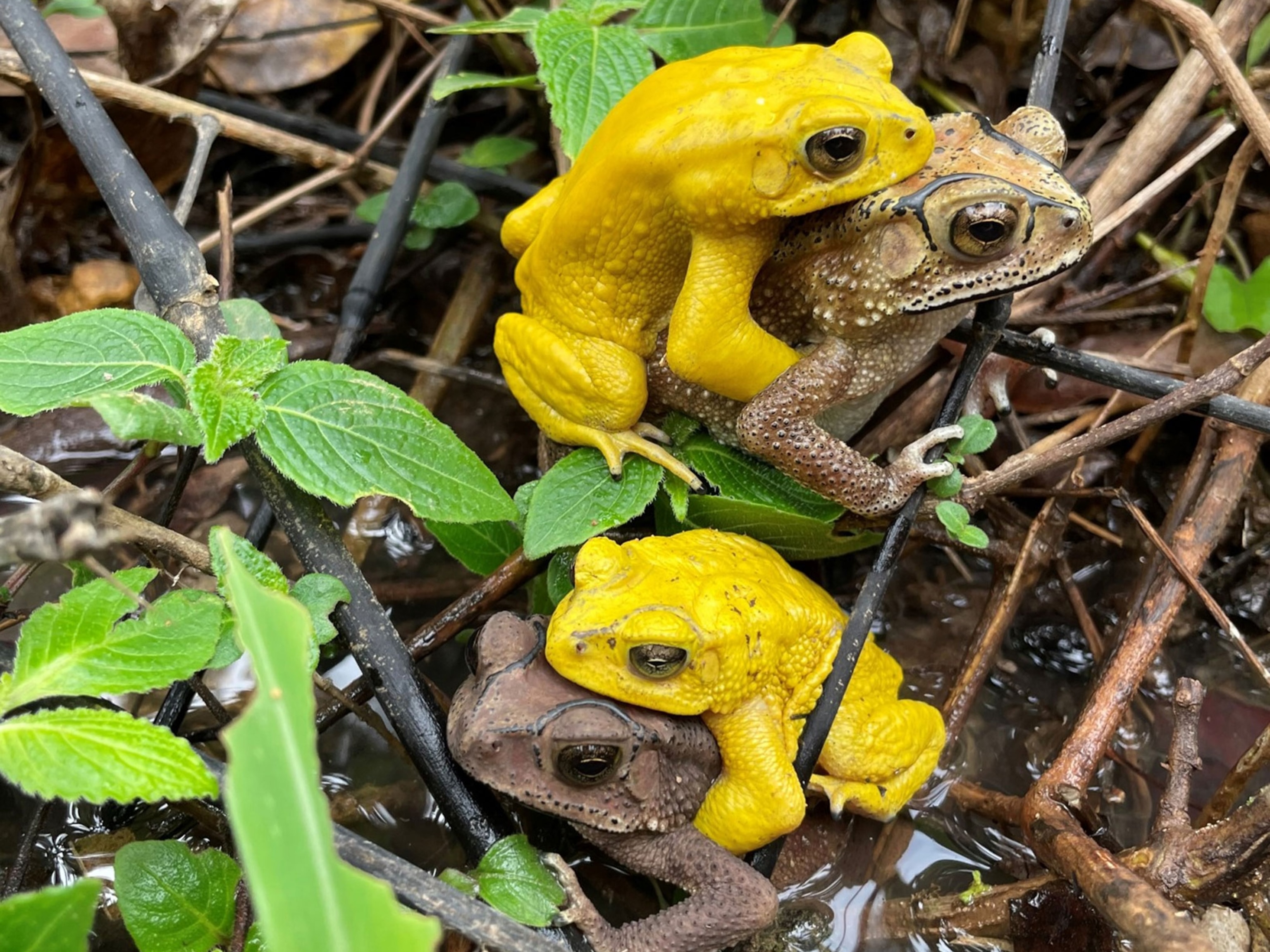Can This Controversial Practice Save Ecuador’s Wild Frogs?
Ecuador is home to over 500 frog species and many face risks from the illegal pet trade. One company thinks it knows how to stop it.
Conservationists in Ecuador have taken a controversial approach to fighting the country’s illegal frog trade—they’ve entered it themselves.
Instead of poaching frogs from the wild, biologists working for the private company Wikiri are hoping to undercut the black market for rare pet frogs by supplying frogs bred in a lab.
Since 2011, the company has been commercially breeding rare frogs. It now raises 12 different species that are sold to buyers in North America, Japan, and some parts of Europe for as much as $600 apiece. In a news story by the news agency Agence France-Presse revealed that the company sells roughly 500 frogs annually. By comparison, AFP reported, around 7,000 wild frogs are exported from throughout Latin America to be sold around the world.
Wikiri hosts the local Jambatu Center for Research and Conservation of Amphibians, a research center focused on saving Ecuadorian frogs from extinction. In July of this year, the center successfully bred a frog species thought to have been extinct for 30 years.
Though it’s a small country, only 109,000 square miles, Ecuador has an incredibly rich frog population. Three diverse ecosystems—the Amazon rainforest, the coastal west, and the mountainous Andes—have given the region high levels of biodiversity.
There are at least 570 amphibian species found within the country’s borders, and 257 of those are found only Ecuador, according to Colorado State University, which discovered a new frog species in Ecuador this past March. (For comparison, the U.S. and Canada contain 110 frog species combined.)
To protect this rich biodiversity, which is a major driver of tourism and industry, Ecuador has strict environmental laws. Selling wild animals is illegal, but that hasn’t stopped illegal frog trading from becoming incredibly profitable.
The Controversy Behind Captive Breeding
The proponents of captive breeding say that as long as there’s demand for rare frogs and other exotic pets, someone will meet that demand, legally or illegally. (See how young people are fueling demand for ultra-exotic pets.)
The aim of captive breeding is to replace the illegal trade with a legal supply that does not remove animals from the wild. But in order for wildlife farming to actually improve conditions for animals at risk of extinction, they must adhere to a number of conditions, according to a study published last April.
The study, published in the journal Global Ecology and Conservation, found that wildlife farming could be successful under certain conditions: if the legally farmed animal is equivalent to its wild-caught version, demand is effectively met, production costs do not exceed those of black market suppliers, farmed animals don’t depend on wild populations for restocking, and the company conducting the farming isn’t used to launder money.
That last point is one of the most significant to watch for, says wildlife expert Chris Shepherd, who is not connected with the frog-breeding company Wikiri. Shepherd has devoted his life to studying the illegal wildlife trade and recently focused his attention on southeast Asia, where captive breeding programs have become nearly as corrupt as the poaching they claimed to combat.
TRAFFIC, the wildlife watchdog group at which Shepherd most recently worked, published a report outlining how breeding tokay geckos in captivity in Indonesia provided a cover for the larger, more lucrative illegal trade.
Shepherd explains that only certain animals are suitable for captive breeding programs. Those that reproduce slowly and take longer to reach sexual maturity are rarely cost-effective, and animals found in abundance in the wild can be sold more profitably than those that were bred in the wild.
“Commercial captive breeding (not to be confused with conservation captive breeding) is often viewed as a conservation solution, and if properly regulated and monitored, it may in fact succeed,” Shepherd told National Geographic by email.
Will Wikiri Work?
Compared with mammals, frogs may be more suitable for captive breeding because they reproduce quickly and require little space. Many lay eggs outside and hatch as tadpoles. According to the AFP, Wikiri is a 54,000-square foot facility with hundreds of terrariums used to house its frogs.
The company did not return multiple request for comment on how it sets prices or its plans for the future.
No one knows how many frogs are illegally sold each year on the black market, but TRAFFIC estimates that illegal wildlife trading to amount to hundreds of millions of dollars every year.
Demand is one of the most dangerous economic drivers of the trade, according to the website of the Wildlife conservation group Save the Frogs. In the U.S., it’s illegal to import endangered or threatened species, but collectors are willing to pay large sums for exotic species.
In Ecuador, it’s also illegal to export any of the region’s wild animals, but Wikiri hopes to make the country’s black market less profitable. Whether or not one private company can put a dent in a lucrative international pet trade remains to be seen.
Update: In an emailed statement, Wikiri stated they plan to adjust the prices of their frogs to stay competitive with the black market while maintaining ethical standards. "While our success can be measured in metrics of longevity or profitability, we have also made great technological advances in breeding new species, which will help the company to continue to grow in the future."








